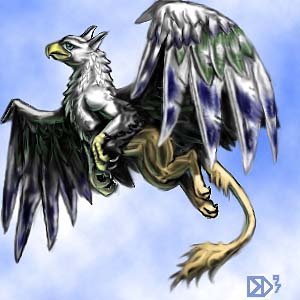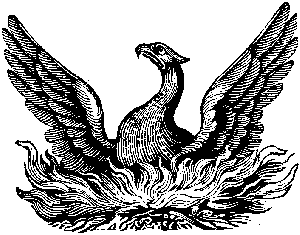Uncover some cool
stuff about Birds
appearing in Mythology
|
|
Please Help Pets by Donating One Dollar
Aello
Aello is one of the Greek Harpies who was employed by the gods to
make peace and carry out punishments for crimes. Aello was
described as a beautiful, winged maiden. Later other writers
described her as a winged monster with the face of an ugly old
woman, with crooked and sharp talons and claws. She also was
described as taking people to the Underworld and torturing them.
Aello is known as the Storm Swift of the three. She was also
described as a horrid woman with the body of a bird.
Ba
The term ba was from ancient Egyptian mythology. Ba was the
Egyptian word for the soul of the deceased. It was depicted as a
bird or a human-headed bird.
Egyptians believed that after death, there would be a final union
between souls and their bodies. Since Ba was the soul, it visited
its old body in the tomb. Ba was the soul, spirit, and mind of a
mummy and could roam freely over the earth, providing its mummy
with substances that were necessary for the afterlife.
There were some holy animals that were regarded as the ba of
gods. One example of this is the Benu of the sun god Re. A Benu
was a sacred bird from ancient Egypt. Theba was a man-headed hawk
and was the ba of a god; the pharaoh is also regarded as the ba
of a god, specifically Re
Benu (Bennu)
The Egyptian mythical sun bird of Heliopolis, connected with the
god Re. The bird is the symbol of the rise of life (also sun
rise) and heralds a new period of wealth, characterized by
fertility. The benu, sometimes portrayed as a heron, is also
associated with the death and rebirth of Osiris.
Gao-kerena
In ancient Persian mythology, the Tree of Life whose roots are
situated in the middle of the world ocean Voura-kasa. The bird
Camros perches in the top of the tree. The seeds of the tree can
resurrect the dead and grant immortality to those who eat them.
Griffon
The griffin was already known as a mythologic animal in the old
ages. Aristeas (7th century before Christ), the first one to
mention it, called him the guard of the gold of Northern Europ
and the adversary of the one-eyed Arimaspes in Scythie. In
ancient Greece the griffin was considered to be an attribute of
Apollo. Portrayed as a gigantic bird with the head of an eagle
and the body of a lion, the griffin appeared on Attic vases and
in the relief art of Anatolia, Babylon and Rome.
The griffin combines the strenght of a lion with the speed of an
eagle. His shaggy legs have sharp claws. According to the ancient
Greek the griffin came from India, and later from the far North.
In the middle ages these myths get a quite different character,
when people tend to believe in its real existance. In 1587,
Lonicern the following description of this animal:
"The Griffin is a feathered, four-legged animal. His body is that
of a lion, with the wings and the face of an eagle. The Griffins
from Asia and Scythie, who guard the gold and silver, are savage
and cruel birds who hardly allow anyone to enter their territory.
Every human being they see will immediately be torn to peaces, as
if their main task in this world is to kill their desire. The
Arimaspi, a tribe from Scythie, fights them because of their
precious stones: in every nest lays an agate. They hate horses
and men, and in battle they will beat an armed man. When they
have killed a cow, horse or human being, they carry it away
flying. Their nails are as big a ox-horns and their feathers are
strong enough to use them as strong arrows or lances."
Griffon

Halcyon
The mythical bird, the halcyon, is identified with the
kingfisher. Ceyx and Alcyone were lovers. Ceyx, the king of
Trachis, was drowned at sea. Hera sent word to Alcyone in her
sleep through Morpheus, the god of dreams, that her husband was
dead. Alcyone in her grief was transformed into the kingfisher;
as she tried to drag the lifeless body of Ceyx to shore, he too
was changed into a bird. The lovers still traverse the waves, and
in winter she broods her young in a nest which floats upon the
surface of the water. During this time, Alcyone's father, Aeolus,
king of the winds, keeps them from disturbing the serene and
tranquil sea. Today, the halcyon days are a period of calm
weather during the winter solstice, especially the seven days
preceding and following it. Halcyon days can also describe any
time of tranquillity.
Hippogriff
A winged horse with the head and claws of an eagle. The head,
wings and front legs of a griffin, and the back legs of a horse.
An elusive creature that can fly long distances at high
altitudes. From the Riphaean mountains. Also called Simoorgh or
Simurgh or Senmurv - the Persian version, sometimes featured as a
cross between a dog or lion and a huge bird.
Icarus
Son of Daedalus who dared to fly too near the sun on wings of
feathers and wax. Daedalus had been imprisoned by King Minos of
Crete within the walls of his own invention, the Labyrinth. But
the great craftsman's genius would not suffer captivity. He made
two pairs of wings by adhering feathers to a wooden frame with
wax. Giving one pair to his son, he cautioned him that flying too
near the sun would cause the wax to melt. But Icarus became
ecstatic with the ability to fly and forgot his father's warning.
The feathers came loose and Icarus plunged to his death in the
sea.
Kiwi
A big bird in New Zealand which could not fly. The god Tane
created it from a calabash.
Phoenix
A legendary bird that lived in Arabia. According to
tradition, the phoenix consumed itself by fire every 500 years,
and a new, young phoenix sprang from its ashes. In the mythology
of ancient Egypt, the phoenix represented the sun, which dies at
night and is reborn in the morning. Early Christian tradition
adopted the phoenix as a symbol of both immortality and
resurrection.
Phoenix

Poukai
A giant bird-god in Polynesian mythology who devoured people.
Roc
in Arabian mythology, enormous bird,
reputedly so powerful that it could carry elephants and other
large creatures to its nest, where it devoured them. The roc
appears in one of the adventures of Sindbad the Sailor in the
compilation of tales known in English as the Arabian Nights. The
overall framework for these stories is their narration by the
legendary Queen Scheherazade as a nightly entertainment for her
husband, by which means she distracts him from his plot to kill
her once their marriage is consummated. The tales originate from
a variety of sources, including Persian, Indian, and Arabic
sources, and the Sindbad stories date back to the 9th century AD.
On one trading voyage, after falling asleep on the island home of
the roc, Sindbad awakens to find himself deserted by his
companions. He discovers a massive egg in the roc's nest and
hides beside it; when the bird returns to its nest, Sindbad ties
himself with his turban to one of its legs. The next day Sindbad
is carried away from the island when the roc takes flight in
search of prey. The roc is also mentioned by 13th-century
Venetian traveler and author Marco Polo in a description of the
island of Madagascar, in the Indian Ocean, and the East African
islands.
Pegasus
The beautiful celebrated winged horse of mythology, he was
ironically the offspring of Medusa when Perseus decapitated her.
Wild and free, he was tamed by the hero Bellerophon with the aid
of the famed golden bridle. Winged animals are not of Greek
origins, and, like the Sphinx, the myth of Pegasus is probably
foreign—most likely it migrated from the East
Safat
The Safat is supposed to spend all her time flying and never
comes to rest. As she soars, usually high, she lays her eggs
which hatch while they are falling through the air. Only the
shells reach the ground, and if part of a shell is eaten by an
animal, the animal will go mad.
Sirens
Birds with women's heads and lovely, mesmerizing voices; they are
possibly associated with mermaids and the lure of the sea. They
would entice sailors with their captivating songs, then eat them
raw. Homer writes of two; later the number was three, and
eventually myth claimed nine. They committed suicide when a
sweeter voice, that of Orpheus, failed to lure any of the
Argonauts to their lair.
Sphinx
Generally associated with Egypt, the half-bird, half-woman
creature made its appearance in Greek mythology as the scourge of
Thebes. It dwelt at the mountain entrance and asked travellers a
riddle, and if the they failed, she would eat them. Oedipus was
asked the riddle, "What has four legs in the morn, two in the
afternoon, and three at sunset?" The answer was man: he is a baby
who crawls, an upright adult, and an elder with a cane.
Demoralized, the sphinx hurled herself to her death.
Thunder Bird
The Thunder Bird myth is perhaps one of the most wide spread
among the Native America. Thunder Bird mythlore can be
categorized into two types: as a benevolent (or sometimes
malicious) nature deity, or a type in which the bird is not
spiritual but corporeal and co-extant with the aboriginal
inhabitants of pre-colonial North America. (This latter type, the
non-spirit myth, might be the source for legends of giant birds
reported in more recent times.) The name Thunder Bird directly
refers to a Native American spirit myth.
More Birds in Mythology
Bagucks in Chippewa mythology
Bar Juchne in Talmud
Camulatz in Maya mythology
Chamrosh in Persian mythology
The Cu Bird in Mexican folklore
Feng-huang, Chinese Phoenix in Chinese mythology
Firebird in Native American mythologies
Garuda in Buddhism and Hinduism
Gryphon in European mythology
Harpies in Greek mythology
Ho-o in Japanese, imported from Chinese; Fenghuang
Huginn and Muninn (Thought and Memory), Odin's two companion
birds in Norse mythology
Kin-u in Japanese, imported from Chinese
Pisia in Native American mythology
Quetzalcoatl in Aztec mythology
Raven in Native American religions
Shang-Yang, a rainbird in Chinese mythology
Simurgh in Persian mythology
Suzaku or Shu-jaku in Japanese, imported from Chinese<
Tecumbalam in Maya mythology
Xecotcovach in Maya mythology
Yatagarasu in Japanese mythology
Ziz in Talmud
See Also:
Prehistoric Birds
Endangered Birds
Extinct Birds
Birds in Mythology, Literature, Movies, etc
|